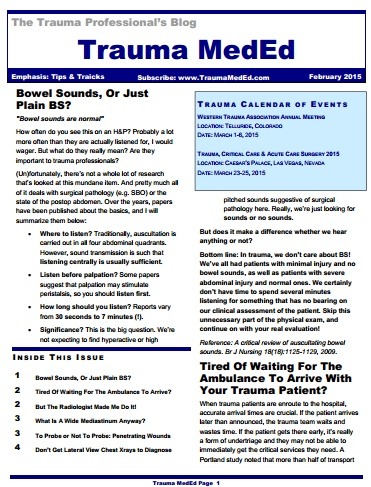There has been a slow shift toward nonoperative management of many injuries that used to demand a quick trip to the operating room. Liver and spleen injury is one of the best examples, with extremely good success rates (95%). Kidneys fall into this category, too.
The pancreas is another solid organ. Perhaps we can do the same thing? A number of pediatric surgeons have been attempting to manage children with pancreatic injury. Low grade injuries (principally contusions) have been managed expectantly for some time. Could higher grade injuries (duct injury) be managed this way as well? How about using repeat imaging, percutaneous drainage, stenting via ERCP, and TPN to avoid the OR in hemodynamically stable kids?
A recent paper looks at this practice critically. Nine years of registry data at two Level I pediatric centers was reviewed to identify all high grade (III-IV) pancreatic injuries. They isolated 39 children with this injury (which is quite a few!). They were separated into two groups based on initial management plan, operative (15) or nonoperative (24). Here are the results of interest (all statistically significant):
- Average ISS was higher in the nonop group (23 vs 15)
- Hospital length of stay was longer in the nonop group (28 vs 15 days)
- TPN was required for a longer period in the nonop group (22 vs 8 days)
- There were more complications in the nonop group (17 vs 4 children), with 13 developing a pseudocyst (none in the op group)
Bottom line: Nonoperative management of high grade pancreatic injury in kids is just not ready for prime time. It may seem that avoiding a big abdominal operation would be a good thing. Distal pancreatectomy usually keeps children in the hospital for 5-7 days, and then they are done unless they have other serious injuries. Nonoperative management results in a lengthy stay in the hospital, multiple imaging studies (radiation), getting stuck with big drainage needles, and TPN with its attendant infection risks. The old fashioned way, going to the OR, is still the best!
Related post:
Reference: Non-operative management of high-grade pancreatic trauma: is it worth it? J Ped Surg 48:1060-1064, 2013.


